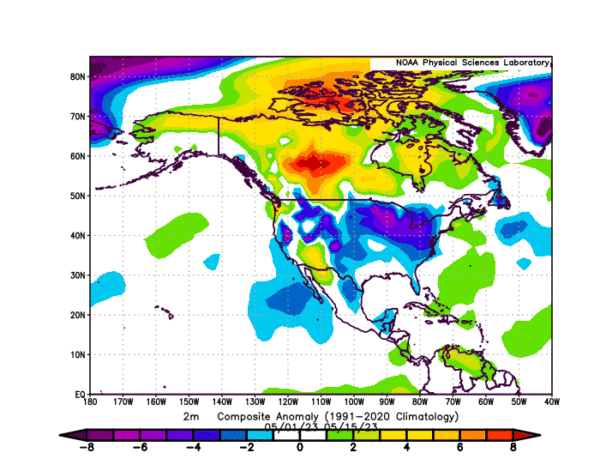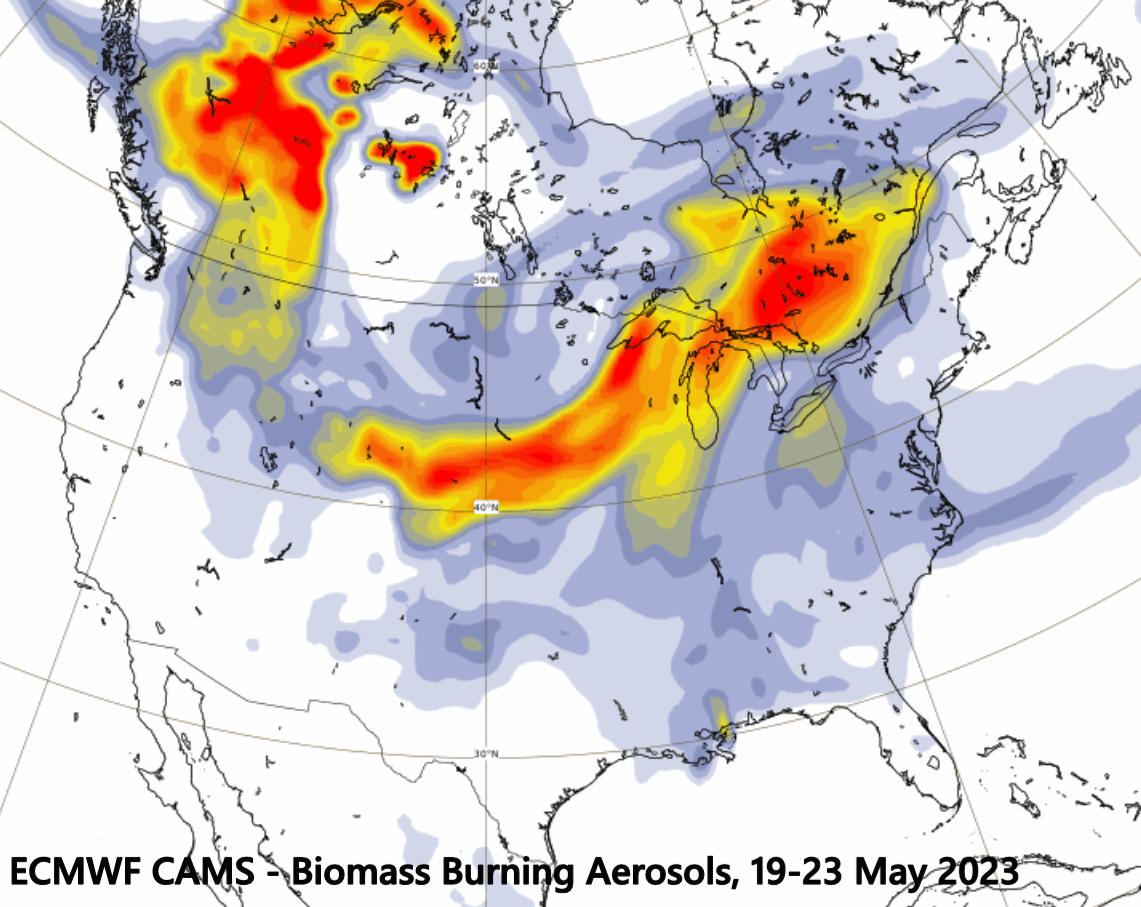Fire season for North America started early this year after record high temperatures dominated the Pacific North West in early May. Temperatures were recorded as high as 31 C at 60° latitudes, close to 35 C in British Columbia and over 32 C in Alberta.

Source: Solcast
The province of Alberta saw close to 100 wildfires raging from the beginning of the month with serious consequences and evacuations for over 30,000 residents and several still burning out of control.

Source: Alberta Wildfire Status Dashboard
Source: Solcast
Smoke impacts irradiance
Smoke produced by the fires has covered most of western Canada and is being pushed east by the prevailing winds. Aerosols present in smoke can be of concern for health and visibility for residents in the region but also affect solar generation: thick clouds of aerosols from burning biomass are spreading all the way to US's Midwest states, and are clearly visible in ECMWF's CAMS data.
Solar asset operators throughout the impacted regions can expect reduced efficiency from both the irradiance impacts and increased panel soiling.

Irradiance and cloud combine to limit irradiance
Popular content
Solcast ingests aerosols data for its radiation modeling and the effect on solar generation from the fire's smoke is clearly visible in data accessed via the Solcast API Toolkit. The below comparison shows the irradiance impact in Alberta, differentiating aerosol losses and cloud losses.
This comparison uses the average clearsky May 2022 data as a non-aerosol impacted baseline, and aerosol impacted clearsky data from May 2023, plus Solcast actuals for May 22 and May 23, 2023. Despite dissipating aerosols on the 23rd, peak irradiance was suppressed on both days by cloud and smoke.

Solcast produces these figures via its irradiance forecasting and weather API by tracking clouds and aerosols at 1 to 2 km resolution globally using satellite data and proprietary AI/ML algorithms. This data is used to drive irradiance models, enabling Solcast to calculate irradiance at high resolution, with typical bias of less than 2%, and also cloud-tracking forecasts. This data is used by more than 300 companies managing over 150 GW of solar assets globally.
The views and opinions expressed in this article are the author’s own, and do not necessarily reflect those held by pv magazine.
This content is protected by copyright and may not be reused. If you want to cooperate with us and would like to reuse some of our content, please contact: editors@pv-magazine.com.


2 comments
By submitting this form you agree to pv magazine using your data for the purposes of publishing your comment.
Your personal data will only be disclosed or otherwise transmitted to third parties for the purposes of spam filtering or if this is necessary for technical maintenance of the website. Any other transfer to third parties will not take place unless this is justified on the basis of applicable data protection regulations or if pv magazine is legally obliged to do so.
You may revoke this consent at any time with effect for the future, in which case your personal data will be deleted immediately. Otherwise, your data will be deleted if pv magazine has processed your request or the purpose of data storage is fulfilled.
Further information on data privacy can be found in our Data Protection Policy.